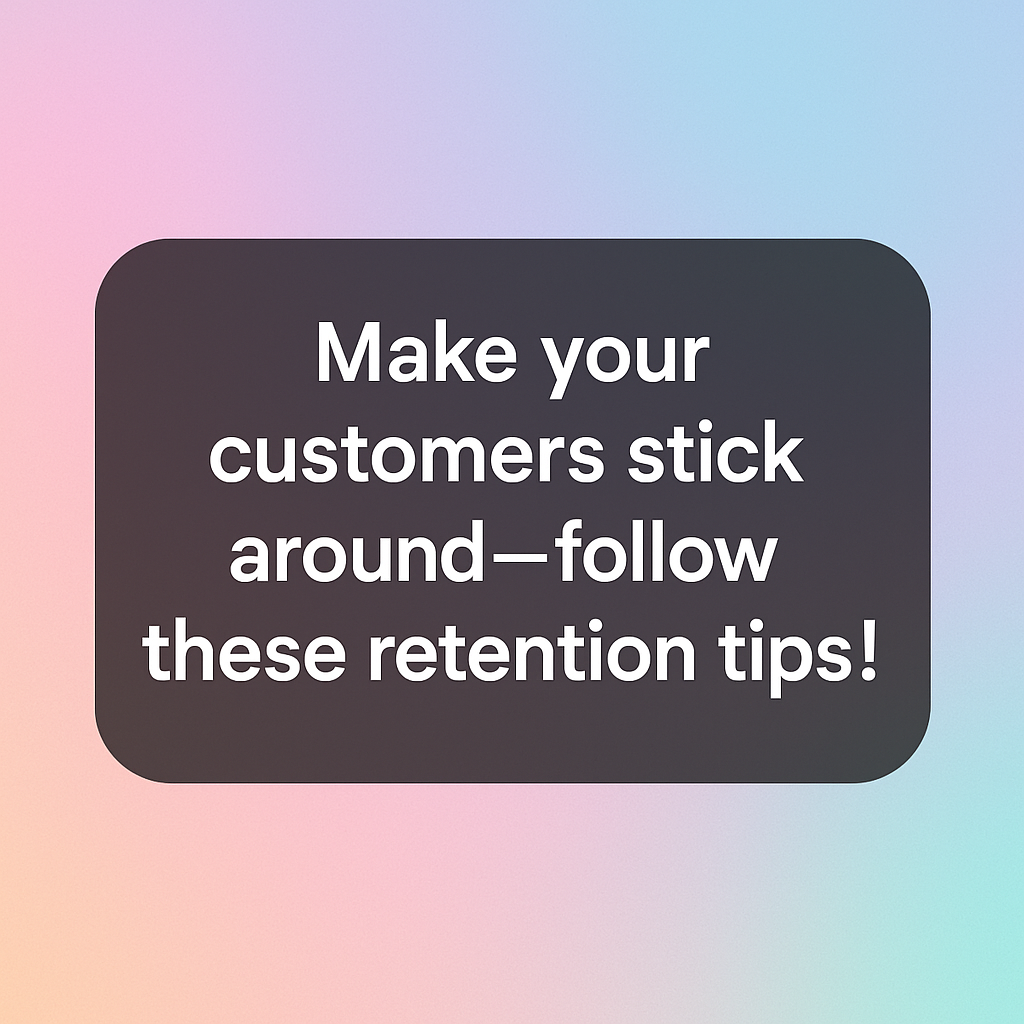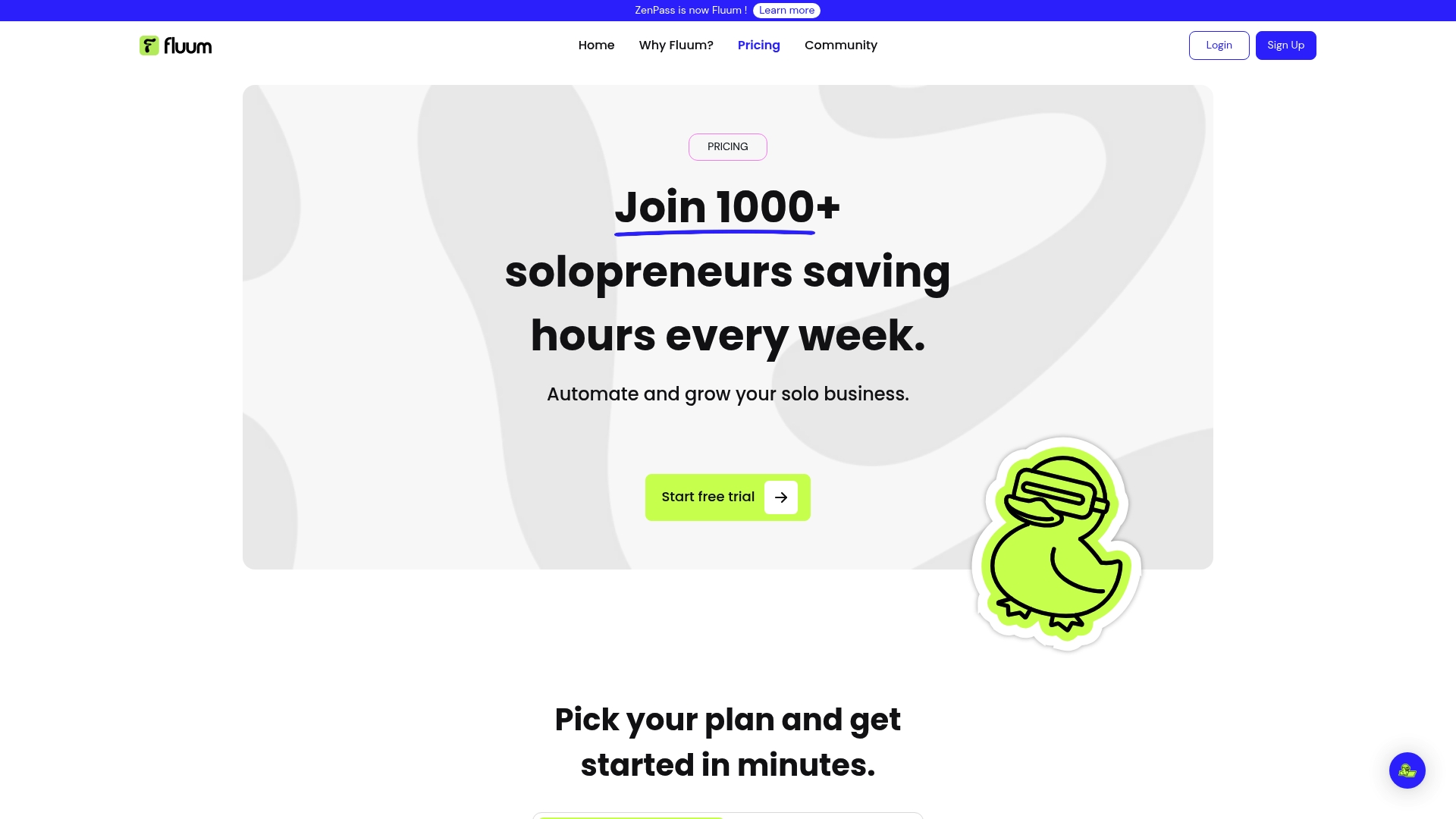
Getting to know your clients through customer retention examples is so important. Keep your clients happy and they will keep coming back, right? Not quite. A Harvard study found that increasing customer retention by just 5% can boost profits by 25% to 95%. That’s a staggering jump for such a small change. The real surprise? Most businesses still pour more money into chasing new customers instead of nurturing the loyal ones they already have.
Table of Contents
- Understand The Importance Of Customer Retention
- Personalized Communication Strategies
- Implementing Loyalty Programs Effectively
- Regular Feedback And Improvement Process
- Creating An Engaging Customer Community
- Utilizing Social Proof And Testimonials
- Offering Exclusive Deals And Discounts
Quick Summary
| Takeaway | Explanation |
|---|---|
| Customer retention drives profit growth. | Increasing retention by just 5% can boost profits by 25% to 95%; maintaining existing customers is crucial for long-term success. |
| Personalized communication fosters loyalty. | Tailored messaging connects with customers on a deeper level, leading to higher engagement and increased spending over time. |
| Loyalty programs must be tailored. | Effective programs should be customized to meet your audience’s preferences, providing real value beyond simple point systems. |
| Collect regular feedback for improvement. | Systematic feedback collection enables businesses to adapt based on customer insights, enhancing satisfaction and retention effectively. |
| Build an engaging customer community. | Establishing a vibrant community transforms customers into advocates, increasing loyalty and creating emotional connections with the brand. |
1: Understand the Importance of Customer Retention
Customer retention examples represents a critical strategy for sustainable business growth. When businesses focus on keeping existing customers satisfied and engaged, they create a powerful foundation for long term success. Research from Harvard Business Review highlights that increasing customer retention rates by just 5% can increase profits by 25% to 95%, underlining the significant financial impact of retention strategies.
Retaining customers offers multiple strategic advantages that go beyond simple revenue generation. Loyal customers provide predictable revenue streams and typically spend more with your business over time. They become brand advocates who recommend your services through word of mouth, effectively functioning as free marketing channels.
Key considerations for understanding customer retention include:
Lower acquisition costs: Retaining existing customers is substantially cheaper than attracting new ones
Higher lifetime value: Customers who remain loyal contribute more revenue across longer periods
Improved feedback loops: Returning customers provide valuable insights about your products or services
Successful businesses recognize that customer retention is not a passive process. It requires active engagement, consistent value delivery, and proactive relationship management. By prioritizing customer experience and demonstrating genuine commitment to their needs, you transform transactions into lasting connections.
Learn more about strategic approaches in our comprehensive guide on client retention strategies. Understanding these principles will help you build a robust, customer centric business model that sustains growth and cultivates long term success.
2: Personalized Communication Strategies
Personalized communication transforms customer interactions from generic transactions into meaningful connections. Tailored messaging demonstrates that you understand and value individual customer needs, creating deeper engagement and loyalty. According to research from McKinsey, companies that excel at personalization generate 40% more revenue than average players.
Effective personalization goes beyond simply using a customer’s first name. It involves understanding their specific preferences, behaviors, and pain points. This requires collecting and analyzing customer data strategically and ethically.
Key elements of personalized communication include:
Segmentation: Divide customers into specific groups based on characteristics or behaviors
Dynamic Content: Customize messaging and offers based on individual customer profiles
Contextual Relevance: Deliver information at the right time through preferred communication channels
Successful personalization requires a combination of data analysis, empathy, and technological tools. Modern customers expect communications that feel like genuine conversations rather than mass marketing attempts. This means moving beyond one size fits all approaches and creating nuanced, responsive communication strategies.
Technology plays a crucial role in enabling personalized communication. Learn more about crafting an effective brand messaging strategy that connects authentically with your audience. By investing time and resources into understanding your customers, you can develop communication strategies that not only retain customers but transform them into passionate advocates for your business.
3: Implementing Loyalty Programs Effectively
Loyalty programs represent a strategic approach to nurturing long term customer relationships and incentivizing repeat business. Well designed loyalty programs transform transactional interactions into meaningful engagement, creating emotional connections that extend beyond simple monetary rewards. According to Bond Brand Loyalty research, 79% of consumers say loyalty programs make them more likely to continue doing business with a brand.
Successful loyalty programs are not one size fits all solutions. They require careful customization that aligns with your specific business model and target audience. The most effective programs provide genuine value that goes beyond generic point accumulation.
Key principles for developing impactful loyalty strategies include:
Personalization: Design rewards that feel tailored to individual customer preferences
Accessibility: Ensure program participation is simple and straightforward
Meaningful Rewards: Create incentives that customers genuinely find attractive and valuable
Tracking and analyzing program performance is crucial for continuous improvement. This means monitoring metrics like enrollment rates, redemption frequencies, and customer feedback. By understanding what motivates your specific customer base, you can refine your approach and create more compelling loyalty experiences.
Technology plays a significant role in modern loyalty programs. Learn more about designing loyalty programs for wellness clients to understand how digital tools can enhance customer engagement. The most successful loyalty strategies view rewards not as transactional discounts but as opportunities to build genuine, long lasting relationships with your customers.
4: Regular Feedback and Improvement Process
Customer feedback represents the most direct pathway to understanding and enhancing your business experience. Organizations that systematically collect, analyze, and act on customer insights create a dynamic improvement cycle that continuously strengthens customer relationships. According to Qualtrics research, companies that implement robust feedback mechanisms can increase customer retention rates by up to 27%.
Effective feedback processes go beyond simple satisfaction surveys. They involve creating multiple touchpoints where customers can share genuine, unfiltered perspectives about their experiences. This requires developing an organizational culture that genuinely values and welcomes constructive criticism.
Key strategies for developing a comprehensive feedback system include:
Multi Channel Feedback Collection: Utilize surveys, direct conversations, social media, and customer support interactions
Systematic Analysis: Implement structured methods to categorize and prioritize customer insights
Transparent Communication: Share how customer feedback translates into actual improvements
Proactive listening builds trust and demonstrates commitment to continuous enhancement. When customers see that their input directly influences product or service modifications, they feel more connected and valued. This emotional investment significantly increases the likelihood of long term loyalty.
Technology can streamline feedback collection and analysis. Digital tools enable real time sentiment tracking, automated survey distribution, and comprehensive data visualization. Learn more about creating effective communication strategies that encourage open, honest customer dialogue.
Ultimately, a robust feedback process is not about collecting data but transforming insights into meaningful action. Businesses that view customer feedback as a strategic asset rather than a compliance requirement will consistently outperform competitors in customer retention and satisfaction.
5: Creating an Engaging Customer Community
Building a vibrant customer community transforms passive consumers into active brand advocates. Communities provide more than just a communication channel they create emotional connections that significantly enhance customer loyalty and retention. According to Forrester research, companies with strong customer communities experience up to 25% higher customer retention rates.
Successful customer communities are built on principles of genuine interaction, mutual support, and shared value. They go beyond traditional marketing approaches by creating spaces where customers can connect, share experiences, and learn from each other.
Key elements of developing a thriving customer community include:
Clear Purpose: Define specific goals and values that unite community members
Active Moderation: Ensure constructive, respectful interactions
Consistent Engagement: Regularly contribute meaningful content and facilitate discussions
Technology plays a crucial role in modern community building. Digital platforms enable real time interactions, knowledge sharing, and peer support across geographical boundaries. By leveraging the right tools, businesses can create inclusive environments that feel personal and supportive.
Explore our guide on community chat tools for client engagement to understand how technology can enhance community interactions. The most effective communities are those that empower members to contribute, learn, and grow together.
Remember that building a community is not about quantity but quality. Focus on creating meaningful connections, providing value, and fostering an environment where customers feel heard, supported, and genuinely appreciated. When done right, a customer community becomes a powerful asset that drives long term business success.
6: Utilizing Social Proof and Testimonials
Social proof transforms potential customer skepticism into genuine trust, providing powerful psychological validation for your business offerings. According to the American Psychological Association, consumers are significantly more likely to trust recommendations from peers over traditional marketing messages.
Testimonials and social proof represent more than simple marketing tactics they are strategic tools for building credibility and emotional connection. When potential customers see authentic experiences from individuals similar to themselves, they can more easily envision their own success with your services.
Key strategies for effectively leveraging social proof include:
Diversity of Testimonials: Showcase experiences from different customer segments
Specific Results: Highlight concrete, measurable outcomes achieved by customers
Multimedia Approach: Use written, video, and audio testimonials for broader appeal
Authentic storytelling is crucial in developing compelling social proof. Customers want to hear genuine experiences that reflect realistic challenges and transformative solutions. This means moving beyond generic praise to share nuanced, detailed narratives that provide real insights.
Learn more about packaging your expertise to understand how to present customer stories effectively. The most powerful testimonials connect emotionally, demonstrating not just what your service does, but how it fundamentally improves customers’ lives.
Successful businesses recognize that social proof is an ongoing conversation. Continuously collecting, curating, and sharing customer experiences creates a dynamic narrative that attracts and retains customers by showcasing real world value and credibility.
7: Offering Exclusive Deals and Discounts
Exclusive deals and strategic discounts serve as powerful psychological triggers that incentivize customer loyalty and repeat business. According to research published by the National Institutes of Health, targeted discounts can significantly strengthen customer brand relationships and motivate continued engagement.
Successful discount strategies go beyond simple price reductions. They create a sense of value, appreciation, and exclusivity that makes customers feel uniquely recognized and rewarded for their continued support.
Key principles for designing effective discount programs include:
Personalization: Tailor offers based on individual customer purchase history
Timing: Create strategic windows for special promotions
Perceived Value: Ensure discounts feel meaningful and substantial
The psychology of exclusive deals taps into customers’ desire for special treatment. When customers believe they are receiving something unique or limited, their perceived value of the offering increases dramatically. This emotional connection transforms transactions into meaningful experiences.
Explore our guide on discount codes for session packages to understand how to structure compelling offers. The most effective discount strategies are not about reducing prices but about creating a sense of partnership and mutual benefit.
Carefully designed discount programs can differentiate your business from competitors. By demonstrating that you value long term relationships over short term gains, you build trust and encourage customers to remain engaged with your brand.
The table below summarizes the article’s key customer retention strategies, highlighting main concepts, core actions, and the measurable business benefits described throughout the article.
| Strategy | Core Actions/Principles | Main Benefits |
|---|---|---|
| Understanding Retention Importance | Focus on satisfaction, long-term engagement, and reducing acquisition costs | Boosts profits (by 25-95%), increases loyalty and referrals |
| Personalized Communication | Segment customers, deliver relevant messages, adapt content to preferences | Builds deeper relationships, raises engagement and spending |
| Effective Loyalty Programs | Offer tailored, valuable rewards; ensure accessibility; track program success | Increases repeat business, strengthens emotional brand bonds |
| Regular Feedback and Improvement | Collect multi-channel feedback, analyze systematically, act transparently | Enhances satisfaction, improves offerings, boosts retention |
| Building Customer Communities | Foster shared purpose, moderate and engage actively, provide digital spaces | Strengthens loyalty, develops advocates, increases retention |
| Utilizing Social Proof and Testimonials | Show diverse real-world testimonials with specific and multimedia formats | Establishes trust, reduces skepticism, attracts new customers |
| Exclusive Deals and Discounts | Personalize offers, time promotions, ensure meaningful perceived value | Drives repeat purchases, increases perceived appreciation |
Ready to Put Proven Retention Strategies Into Action?
Reading about customer retention is only the first step. As a solopreneur, you know how challenging it can be to actually build long-term loyalty while managing every aspect of your business by yourself. The article outlined how vital personalized communication, loyalty programs, and client feedback are, but piecing these together—while juggling your calendar, payments, and marketing—can leave you feeling stretched thin and overwhelmed.

Why not turn every retention tip into real results right now? With Fluum.ai, you have an all-in-one toolkit that instantly bridges the gap between learning and implementation. Automate your client engagement, reward loyal customers, and collect ongoing feedback—no coding or technical hassle required.
Take the first step today. Check out Fluum.ai pricing to discover how you can streamline your retention strategy and finally free up more time to grow your business. Your most loyal customers—and your future self—will thank you.
Frequently Asked Questions
What are some effective strategies to improve customer retention?
Focusing on customer experience through personalized communication, loyalty programs, regular feedback, and community building can significantly enhance customer retention.
How can personalized communication impact customer loyalty?
Personalized communication helps in developing deeper connections with customers by addressing their specific needs and preferences, which increases their loyalty to the brand.
What role do loyalty programs play in customer retention?
Loyalty programs incentivize repeat business and foster emotional connections with customers by providing tailored rewards that add real value, beyond mere discounts.
How can businesses effectively collect customer feedback?
Businesses can collect customer feedback through multiple channels like surveys, direct conversations, and social media interactions, ensuring that they create a culture that values and acts on customer insights.
Recommended
- Fluum | What is Loyalty Programmes for Fitness Clients
- Fluum | What is Client retention strategies
- Fluum | What is Loyalty Programmes for Returning Meal Plan Subscribers
- Fluum | What is Loyalty Programmes for Wellness Clients
- Fluum | Understanding Content Marketing Providers: Their Role and Impact
- How to Engage Customers Online: Boost Your Business Success | Ibrandmedia
- Understanding Lead Nurturing Explained: Building Relationships



